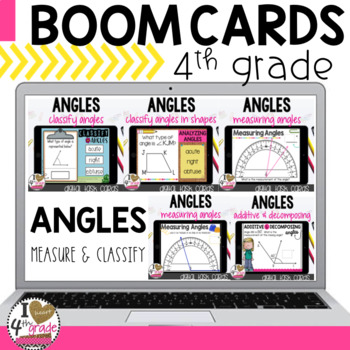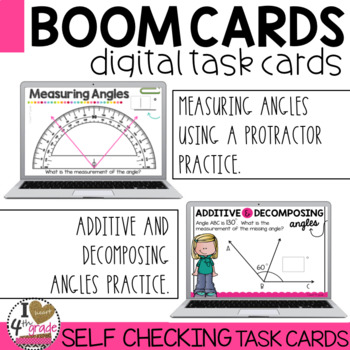Boom Cards Measuring Angles Bundle
- Zip
- Internet Activities
What educators are saying
Products in this Bundle (5)
Also included in
- *** This is a newly updated BOOM Bundle.After purchase please click on the PDF Bonus file to download all 100 Boom Decks in one click. The new download includes Boom Decks not yet available in my Teachers Pay Teachers Store.Looking for digital tools to implement into your classroom to increase motiPrice $105.00Original Price $197.50Save $92.50
Description
Looking for digital math centers to compliment your 4th grade angles unit? This bundle of 5 sets of digital task cards is both paperless and self-checking. Aligned to 4th grade math standards, students can practice measuring and classifying angles. Decks include practice for: classifying angles, classifying angles in 2-dimensional shapes, measuring angles on a protractor, and additive and decomposing angles. (Make sure to click on the preview to play a section of each deck for yourself!)
Bundle Includes 5 Different Boom Task Card Sets aligned to 4th grade angle standards:
This Boom Card set is aligned to 4th grade angle standards
Digital PAPERLESS Self-Checking Boom Task Cards do not require printing, laminating, or cutting! Great to use for:
• Whole Class Instruction
• Mini Lessons
• Small Group Instruction
• Math Centers
• Independent Work
• Intervention
MORE ABOUT BOOM DIGITAL TASK CARDS
"With your Teachers Pay Teachers purchase, users new to Boom Learning get a three-month free trial of student progress reporting for up to 150 students. Your trial includes the ability to make up to 5 free DIY decks. You may upgrade or cancel at any time. Boom Cards play on modern browsers (released in the last three years) on interactive whiteboards, computers and tablets. Boom Cards apps are also available. Not sure if your browser is modern enough? Try a free Boom Cards deck first. When you redeem your purchase, Boom Learning opens an account for you if you do not already have one. If you do not subscribe at the end of your trial, you will be able to continue using Boom Cards with the Fast Play feature. Fast Play does not track individual progress. If you do not subscribe we will delete your student records 3 months after the expiration of the trial to protect student privacy."






